Background
Livelihood systems in the drought-prone arid and semi-arid lands (ASALs) of the Horn of Africa (HoA) have been under-resourced, leaving their population more vulnerable to external stressors. Droughts of varying intensity and increasing frequency have hit the HoA in the past four decades, mechanisms were not in place for drought resilience. These perennial drought crises have severely impoverished the natural resource base of the ASALs, rendering pastoralists’ traditional livelihoods throughout the HoA increasingly tenuous. Climate change will likely worsen and intensify the frequency and magnitude of droughts and floods in the region.
IGAD and the member States developed a strategy to end drought emergencies called the IGAD Drought Disaster Resilience and Sustainability Initiative (IDDRSI). The IDDRSI strategy has markedly changed design elements of the development programmes and projects by harmonising short and medium-term humanitarian interventions with long-term development programmes to build drought resilience over time.
Within the IDDRSI framework of action, Regional Pastoral Livelihoods Resilience Project (RPLRP) seeks to develop regional solutions to challenges faced by pastoralists who reside in the ASALs of Kenya, Uganda and Ethiopia, to enhance opportunities for livelihood development available to them. The ecosystems from which pastoralists derive their livelihoods often go beyond national borders as do the livestock market networks that provide them with opportunities for income growth. Seasonal and cross-border mobility is a crucial feature of pastoralism allowing pastoralists to carry out livestock-based livelihoods in the ASALs, to cope with droughts and to manage conflicts over natural resource use. Thus regional approach to the challenges of ASALs is important aspect.
Project Objectives
To enhance livelihoods resilience of pastoral and agro-pastoral communities in cross-border drought prone areas of Ethiopia, Kenya and Uganda as well as improve the capacity of these Countries’ governments to respond promptly and effectively to an eligible crisis or emergency.
Project components
- Natural Resources Management: aims at enhancing the sustainable management and secures access of pastoral and agro-pastoral communities at natural resources (water and pasture) with trans-boundary significance
- Market Access and Trade: aims at improving the market access of the agro-pastoralists and pastoralists to the intra-regional and international markets of livestock and livestock products.
- Livelihood Support: aims at enhancing the livelihoods of Pastoralist and agro-pastoralist communities.
- Pastoral Risk Management: aims at enhancing drought-related hazards and preparedness, prevention and response at the national and regional levels.
